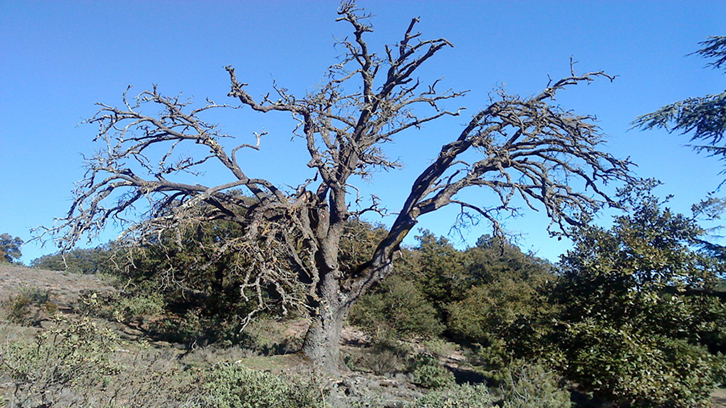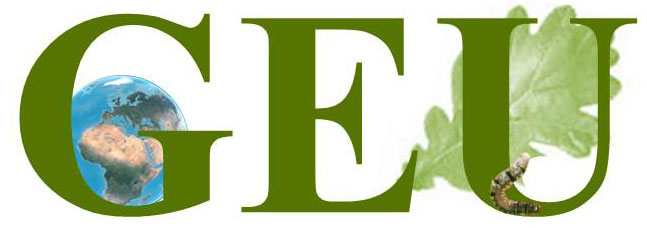
El bosc mediterrani està sotmès a unes condicions climàtiques cada cop més càlides i amb una disponibilitat d’aigua més escassa. L’alzina pot ser substituïda per altres espècies arbustives més resistents a la sequera. Tanmateix, una aclarida selectiva de troncs realitzada a l’alzinar de Prades ens mostra com aquesta gestió permet reduir la mortalitat d’arbres i preservar l’actual estructura de l’alzinar i els seus serveis ecosistèmics. La Unitat d’Ecologia Global del CREAF s’ha centrat en dos tractaments experimentals de reducció d’aigua i disminució d’arbres per estudiar-ne les repercussions i per gestionar pròxims escenaris ecosistèmics.
Per a les properes dècades es preveu un augment de la temperatura i alhora
canvis en
diversos patrons climàtics arreu del món: la intensitat i durada de fenòmens
extrems com ara onades de calor, inundacions i sequeres aniran en augment.
Aquest increment de la temperatura, juntament amb una pluviositat semblant o
fins i tot més escassa, pot comportar un augment de l’evapotranspiració a
moltes zones de clima semi àrid o mediterrani.
S’ha mesurat la mortalitat anual de troncs, en un alzinar situat a les
Muntanyes de Prades, durant 20 anys consecutius (1999-2019). S’ha investigat la
influència de les condicions climàtiques anuals, així com l’efecte de dos
tractaments experimentals: 1) una sequera experimental (15% de disminució en la
disponibilitat d’aigua), per tal d’estudiar la mortalitat dels troncs sota les
condicions més seques previstes per a les properes dècades; 2) una estassada
selectiva (tala d’un 25% dels troncs), per tal d’estudiar el possible
esmorteïment dels efectes de la sequera mitjançant l’augment de disponibilitat
d’aigua i nutrients pelstroncs romanents.
La mortalitat de troncs ha estat més gran quan la temperatura ha estat més
elevada i la pluja més baixa, especialment durant la primavera i l’estiu. La
mortalitat de troncs ha estat més gran en l’alzina (Quercus ilex), que no pas
en altres espècies arbustives o arbòries com l’aladern de fulla ampla o l’arboç
(Phillyrea latifolia o Arbutus unedo respectivament), més ben adaptades a
condicions eixutes. El tractament de sequera ha comportat un increment de la
mortalitat de troncs, especialment en els anys més secs, i l’alzina ha estat
l’espècie més afectada pel tractament de sequera. Per altra banda, l’estassada
selectiva ha reduït molt la mortalitat de troncs (d’alzina en particular),
protegint així l’estructura d’aquest bosc dels efectes del canvi climàtic.
Aquests resultats mostren un futur augment de la mortalitat d’arbres i
decaïment forestal, així com una progressiva substitució de l’actual espècie
dominant d’aquest bosc, l’alzina, per altres espècies arbustives millor
adaptades a les noves condicions climàtiques. A més, varis serveis ecosistèmics
com l’esmorteïment del canvi climàtic mitjançant la captació de CO atmosfèric
es veuran seriosament afectats. Tanmateix, l’estassada selectiva de troncs resulta
ser una eina excel·lent per a la gestió d’aquest bosc sotmès al canvi climàtic:
a més dels beneficis per a la conservació del bosc i el seu funcionament,
l’estassada contribueix a esmorteir el canvi climàtic tot augmentant la
captació de CO atmosfèric amb l’augment de la seva activitat fotosintètica.
L’estassada selectiva de troncs també comporta altres beneficis indirectes com
la disminució del risc d’incendis forestals i l’augment de la disponibilitat
d’aigua per al consum humà, ja que una elevada densitat de troncs afavoreix la propagació
d’incendis forestals degut a l’abundància de troncs i branques mortes, i una vegetació
molt densa consumeix una gran quantitat d’aigua de pluja.
Romà Ogaya, Daijun Liu, Adrià Barbeta, Josep Peñuelas
Unitat d’Ecologia Global
CREAF-CEAB-CSIC – Universitat Autònoma de Barcelona
r.ogaya@creaf.uab.cat
Referències
Ogaya, R., Liu, D., Barbeta, A., Peñuelas, J. 2020. Stem
mortality and forest dieback in a
20-years experimental drought in a Mediterranean holm oak forest. Frontiers in
Forests and Global Change 2: 89. doi: 10.3389/ffgc.201900089.
Font: UAB Divulga
